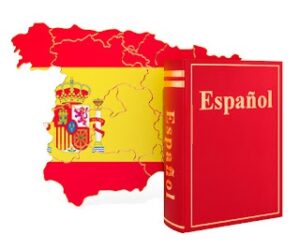What is Spanish language development?
Modern Spanish, (Española), originated from the Castilian language of the Kingdom of Castile in Northern Spain. It has an affinity with some of the other languages of the West Iberian peninsular, notably Ladino, which is in essence medieval Castilian and is the closest to modern Spanish.
The Spanish language shares a lexical similarity with Italian, (rated at 82%) and also shares a similar phonological system with it as well as grammar, which enables the two to be mutually intelligible to a degree. Spanish has an even more significant lexical similarity with Portuguese, (89%), but differences in pronunciation mean that they cannot easily understand each other.
The written words in the Romance languages have sufficient features in common to make it easier to understand the writing of the different languages than to communicate verbally. Written speech uses the Latin alphabet plus the character ñ which is distinct from the letter n.
The Spanish language evolved initially been from the popular dialects of Latin with some influence from Arabic during a the period before the late 15th century. In the 16th century and later, Spanish colonization took the Spanish language to the Americas and Spanish East Indies. During that time, Spanish became the principal language of art and politics in Europe until French replaced it in the 18th century. Later in the 20th century, Spanish was spread further with its introduction into Western Sahara and Equatorial Guinea as well as to the Spanish Harlem in New York.
Spanish is one of the fourth most spoken languages in the world. It commands considerable prestige among the languages of the world, being one of the official languages of; the European Union, Organization of American States, the Organization of Ibero-American States, the United Nations, the Union of South American Nations.
The spoken language has variations among the regions of Spain and also in Spanish-speaking America where it is referred to as Castellano, to differentiate it from the the version of the language used in Spain.
The Castilian dialect is usually regarded as the standard for Spain. The “Madrid dialect” is used for informal speech. This is a variant between Castilian and Andalusian dialects. Spanish is becoming more popular as a second language, particularly in the United States of America. One reason for this is that the continuing globalization of commerce requires companies and individuals to become more competitive. Fluency in a very second language is a definite asset, and in the majority of instances, Spanish is the language of choice.
Spanish is a prevalent language to study as a second idiom because it is relatively easy and fun to learn, and it opens up exciting new vistas to those who make an effort to learn it.

Leave a Reply
You must be logged in to post a comment.